Visibility is a critical factor when it comes to driving safety. Every driver knows the importance of being able to clearly see their surroundings, whether it’s merging onto a highway, reversing into a parking spot, or simply navigating city streets. Poor visibility can lead to accidents, confusion, and stress when driving.
As vehicles continue to evolve in design, performance, and technology, there is a noticeable trade-off between aesthetics, aerodynamics, and practicality.
While many modern vehicles are designed to offer a sleek, futuristic look, they often come at the cost of limited visibility. Conversely, some vehicles are engineered with optimal visibility in mind, providing drivers with clear sightlines in every direction, enhancing both safety and confidence on the road.
The importance of visibility in a vehicle is paramount, especially in a world where distracted driving is an ever-growing concern. Studies have shown that blind spots, or areas around a vehicle that are not visible to the driver due to obstructions like pillars, mirrors, and windows, contribute significantly to accidents, particularly when changing lanes, turning, or reversing.
In addition, poorly designed visibility can make it harder for a driver to spot pedestrians, cyclists, or other vehicles that may not be immediately obvious. This is where the value of good visibility comes into play: it makes driving not only safer but more intuitive.
A vehicle with poor visibility can lead to a frustrating driving experience, where a driver constantly has to rely on technology or perform unnecessary head movements just to ensure their surroundings are clear.
In the automotive world, there is an interesting dichotomy between vehicles that offer excellent visibility and those that hinder it. Some vehicles, particularly those designed with utility, safety, or practicality in mind, prioritize clear sightlines, with large windows, slim pillars, and open, spacious cabins.
These vehicles are designed to give the driver an unobstructed view of the road, reducing the chances of accidents caused by unseen obstacles or other vehicles.
On the other hand, there are vehicles where aesthetics and design take precedence, resulting in cars with thick pillars, small windows, or sloping rooflines that obstruct the driver’s vision. Although these vehicles may look sleek and sporty, they often come with the hidden downside of limited visibility, which can make driving more challenging and less safe.
This article will explore both ends of the visibility spectrum, highlighting five vehicles that offer perfect visibility and five vehicles that struggle with awful blind spots. We’ll take a closer look at how design choices such as the shape of windows, placement of pillars, and vehicle structure impact the driver’s ability to see clearly.
Furthermore, we will examine the implications of these visibility issues on driver safety, comfort, and convenience. By exploring both the positives and negatives of visibility in modern cars, this article aims to provide a comprehensive understanding of how visibility can affect your driving experience and why it should be a top consideration when choosing a new vehicle.
ALSO READ: 12 Cars With AC Vents That Don’t Cool the Back Seats Well
Vehicles With Perfect Visibility

1. Subaru Forester
The Subaru Forester is a standout among compact SUVs when it comes to visibility. With its large windows and minimalist pillars, the Forester provides excellent sightlines in every direction. One of the most striking aspects of the Forester’s design is its high, upright driving position.
This gives the driver a commanding view of the road ahead while also making it easier to spot potential hazards, whether it’s a pedestrian, another vehicle, or a cyclist. Additionally, the Forester’s expansive windshield provides clear visibility even in inclement weather, as the large surface area allows for more effective wiper coverage.
The design of the Forester is square-edged, unlike many of the more rounded crossovers and SUVs that focus on aerodynamic appeal. The rear window is large and relatively flat, ensuring that reversing or parking is less of a challenge compared to other vehicles in its class.
The rear quarter windows are also large enough to minimize blind spots when changing lanes or merging onto highways. Unlike some other compact SUVs that compromise rear visibility due to the sloping roofline or thick pillars, the Forester retains an open, airy feel with unobstructed sightlines.
For drivers who value safety, the Subaru Forester’s design minimizes one of the most common sources of accidents: poor visibility. The side mirrors are well-placed and proportionally sized, and the height of the Forester means drivers are less likely to find themselves blocked by larger vehicles on the road.
Whether navigating tight urban spaces or winding mountain roads, the Forester gives drivers confidence to make quick, informed decisions based on what they can see.
The Forester’s visibility is further enhanced by Subaru’s EyeSight Driver Assist Technology, which provides adaptive cruise control, lane departure warnings, and pre-collision braking. While these technologies are incredibly useful, the car’s inherent design makes it much easier for drivers to rely on their natural awareness, which increases safety.

2. Honda CR-V
The Honda CR-V is known for being one of the most well-rounded compact crossovers on the market, and its excellent visibility is one of the standout features that make it so popular with families and commuters alike. The CR-V’s cabin design prioritizes openness, with an unobstructed view of the road thanks to its low dashboard and relatively thin pillars.
One of the most notable features of the CR-V is its front pillars, which are narrower compared to many competitors, offering better side vision during turns and lane changes. This design ensures that drivers don’t have to lean forward or crane their necks when making left or right turns.
The vehicle’s relatively flat windshield allows for a clear view of the road ahead, while the side windows are large enough to prevent blind spots from becoming a major issue. The rear window and rear quarter windows are also expansive, contributing to a comprehensive view when reversing or parking.
Many drivers report that the CR-V feels “open” from the driver’s seat, thanks to the wide window coverage and low dashboard that don’t obstruct sightlines in any direction. This is especially important in urban environments, where visibility can be critical in avoiding collisions in congested areas.
Honda has also thought about rearward visibility, a common issue in many crossover and SUV models. The CR-V’s rear headrests are adjustable and can be lowered flat, allowing for better rear visibility.
The compact size of the CR-V ensures that the rear window is more manageable for drivers than in larger SUVs with deep, sloping rear ends. The side mirrors are positioned perfectly to help drivers keep an eye on vehicles in adjacent lanes, minimizing the reliance on high-tech safety systems and making it a more intuitive driving experience.
Moreover, the Honda CR-V comes equipped with a suite of modern technology, like LaneWatch, which displays a live video feed of the passenger side via the infotainment screen when the right turn signal is activated. This not only enhances the driver’s situational awareness but also makes lane changes significantly safer, particularly on highways or busy roads. It’s a perfect blend of technology and design that makes visibility a top priority without compromising other vehicle attributes.
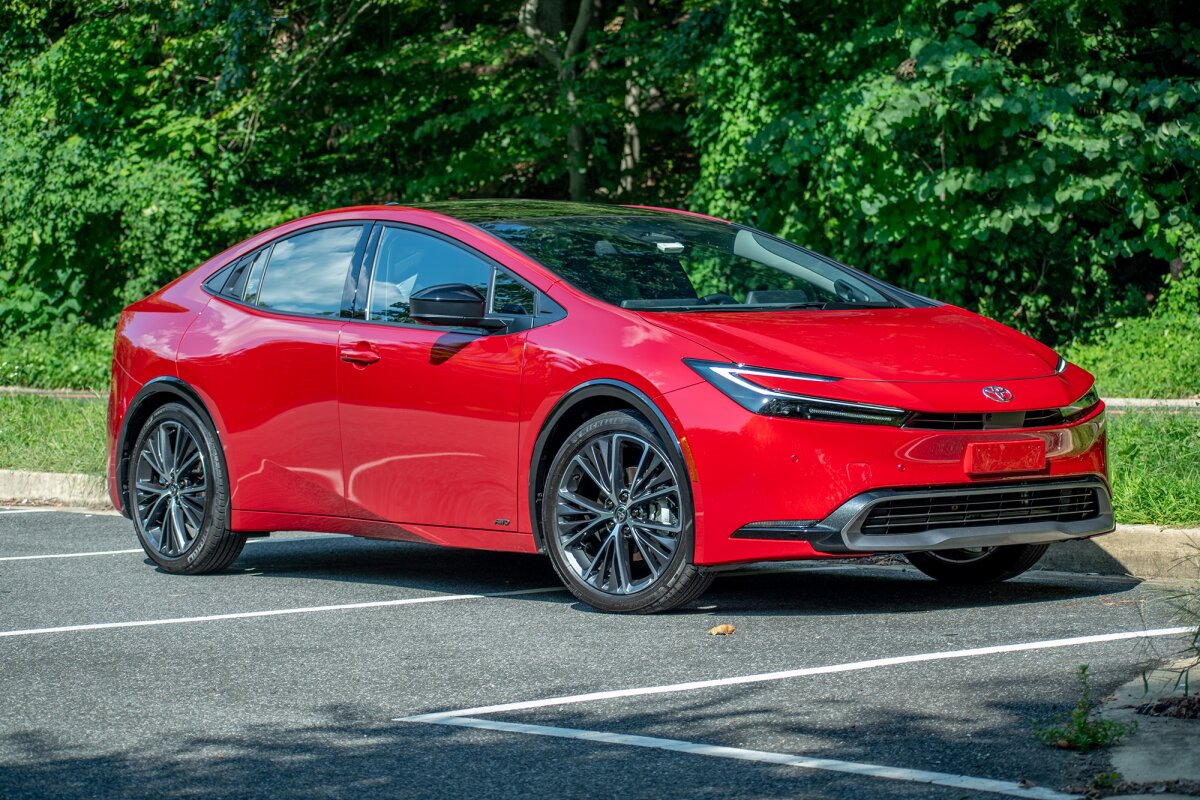
3. Toyota Prius (Pre-2023 Models)
The Toyota Prius, especially in its third and fourth generations, is often hailed as a prime example of thoughtful visibility design. While the Prius is mainly known for its hybrid technology and fuel efficiency, its cabin design also offers remarkable outward visibility.
The Prius features a steeply raked windshield that’s larger than in most sedans, offering an unobstructed view of the road ahead. This wide expanse of glass ensures that the driver can enjoy a panoramic view of the road, which is especially helpful for long drives or in complex traffic scenarios.
The Prius’ rear visibility is another area where it excels, despite some initial skepticism about its unusual rear window design. The split rear window design provides the driver with a better sense of what’s happening behind the car compared to the traditional sedan-style rear window.
It’s also shaped to minimize the blind spots that often come with hatchback vehicles, offering clearer sightlines when reversing. The vertical glass section on the hatchback is an added bonus, allowing for a more comprehensive view of the ground behind the vehicle, which helps when backing into a parking space.
The Prius offers a comfortable and elevated seating position that further contributes to excellent visibility. The dashboard and infotainment system are intentionally designed to sit low, keeping the driver’s sightlines unobstructed.
The rear-seat passengers also benefit from large side windows, which help make the cabin feel more open and airy, even for those sitting in the back. This also allows rear-seat passengers to better monitor their surroundings and communicate with the driver when necessary, improving awareness.
However, the Prius is not just about good design—it also integrates several tech features to enhance visibility. The Toyota Prius comes with standard rearview cameras, and many models are equipped with parking sensors and radar-based blind spot monitoring systems.
While these systems are helpful, the Prius’ design allows the driver to feel more naturally aware of their surroundings without needing to rely heavily on these technologies. The Prius is a prime example of how design and technology can work in harmony to create an experience that feels both intuitive and safe.
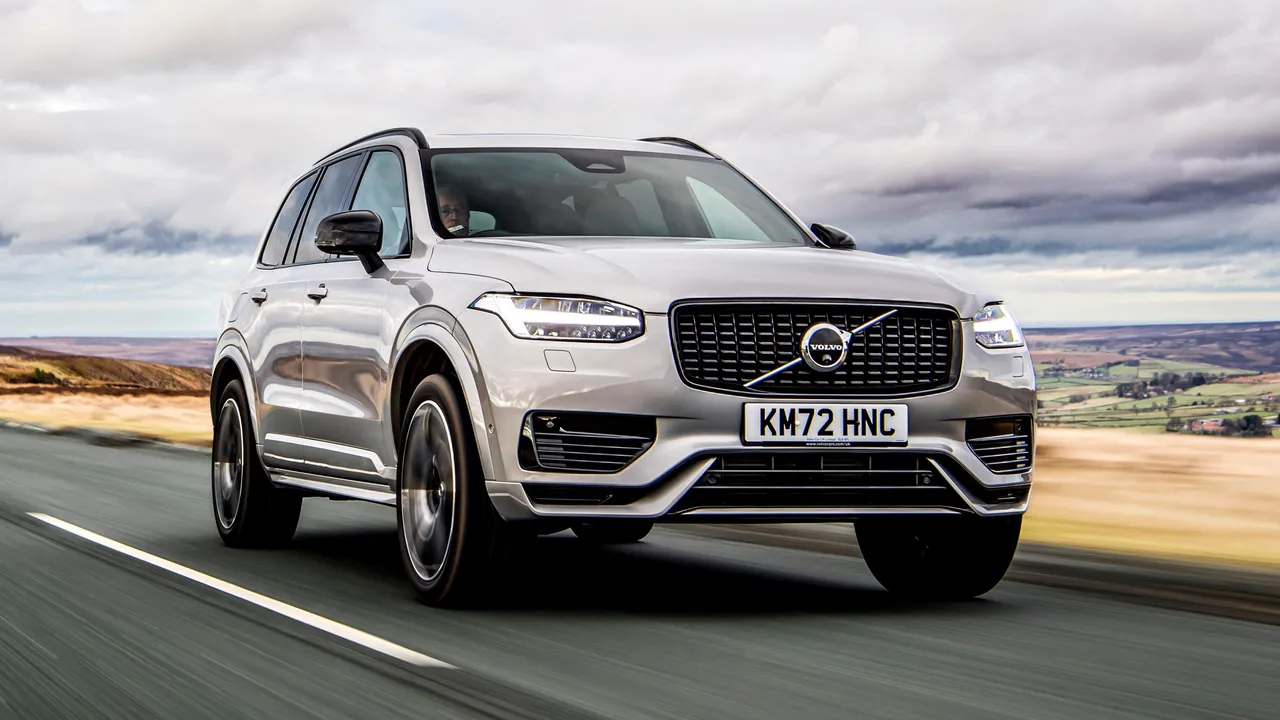
4. Volvo XC90
Volvo has long been known for its focus on safety, and the Volvo XC90 is a prime example of how good visibility is key to safe driving. The XC90’s cabin design is based on the idea of providing the driver with a commanding view of the road, and it doesn’t disappoint.
With its upright seating position, large windows, and narrow A-pillars, the XC90 allows for excellent forward visibility. The vehicle’s tall roofline and boxy shape provide a sense of openness, with large front and side windows that allow for unobstructed views of the road and surroundings.
The rearward visibility in the XC90 is equally impressive. The rear window is large and wide, and the relatively short rear overhang makes it easier to gauge the distance when parking or reversing. The side mirrors are large and positioned high enough to reduce blind spots while driving on highways, offering great assistance when changing lanes or merging. The XC90’s design ensures that drivers don’t need to rely excessively on technology to maintain awareness of what’s around them.
Furthermore, the Volvo XC90 offers a host of advanced safety features, including 360-degree cameras, a surround-view monitoring system, and rear cross-traffic alert. These systems are not designed to replace good visibility but to supplement it, ensuring that the driver has an even greater level of confidence. The XC90’s design philosophy of combining visibility with technology makes it a favorite among families and safety-conscious drivers.
For those who frequently drive in tight or crowded spaces, the XC90’s ability to provide clear sightlines even in difficult parking situations is a major plus. The cabin’s open and airy feel, combined with a relatively low dashboard, ensures that you won’t feel boxed in, even when driving in confined spaces. The thoughtful design of the Volvo XC90’s windows, mirrors, and structure allows for a driving experience that’s both safe and enjoyable.

5. Jeep Wrangler (with Soft Top or No Top)
When it comes to open-air driving, the Jeep Wrangler is unmatched in terms of visibility. While it’s true that the Wrangler’s design focuses on rugged off-road capabilities, it also offers one of the clearest, unobstructed views of any vehicle on the market, especially when the roof is down or the doors are removed.
With a relatively high driving position and large, vertical windows, the Wrangler provides excellent forward and side visibility. The flat windshield allows the driver to easily see over the hood, and the large side windows further reduce blind spots.
One of the most distinctive features of the Wrangler is its customizable visibility options. For those who love the feeling of driving in the open air, removing the roof and doors allows for an unparalleled 360-degree view of the surroundings.
Whether you’re cruising down a trail, maneuvering through a city, or parking in a crowded lot, the Wrangler offers a level of visibility that very few vehicles can match. Even with the hardtop in place, the Jeep’s large, square windows and relatively low beltline make it easier to see all around the vehicle.
Additionally, the Jeep Wrangler’s relatively boxy design gives drivers the benefit of clear sightlines in tight spaces. The raised height and flat roofline mean that even drivers of average height can easily see over other vehicles. The Wrangler’s design is straightforward and functional, prioritizing the driver’s ability to see every inch of their surroundings, whether they are on a remote trail or in a bustling city environment.
For drivers who value visibility as much as performance, the Jeep Wrangler’s open-air design and clear sightlines make it an ideal choice, especially for those who regularly venture off the beaten path or drive in tight spaces. It’s a vehicle that allows you to embrace the environment while staying connected to the road around you.
Vehicles With Awful Blind Spots
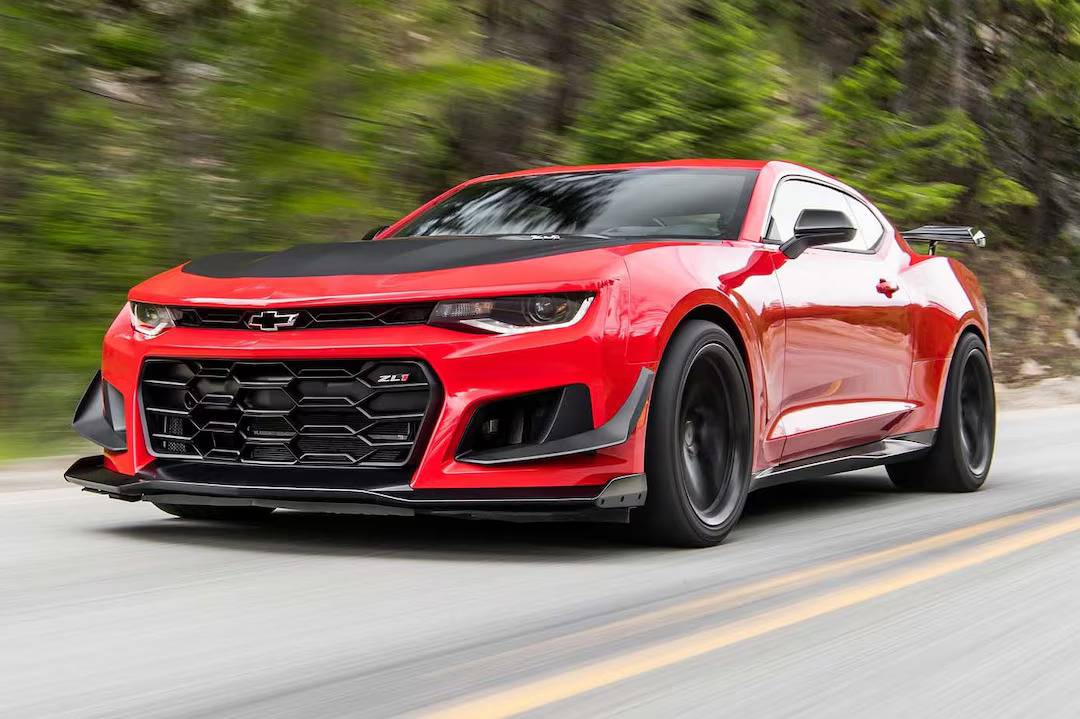
1. Chevrolet Camaro
The Chevrolet Camaro is a legendary American muscle car that prioritizes style, speed, and performance, but in doing so, it sacrifices visibility. With its low-slung body and aggressive design, the Camaro offers drivers an exhilarating driving experience, but it doesn’t do much to help with situational awareness.
The car’s wide rear pillars and sloping roofline contribute to significant blind spots, especially when it comes to the rear three-quarters. These thick pillars obscure the view of vehicles in adjacent lanes, making lane changes and merging onto highways more difficult.
Additionally, the rear window in the Camaro is quite small, and the sharply raked angle of the rear windshield makes it challenging to see clearly out the back. The small rear window, combined with the high rear-end design, creates a “bubble” effect that limits visibility when reversing or parking.
Even with the car’s rearview camera, drivers often report that they struggle to get a full sense of their surroundings, especially in tight spaces. When reversing out of a parking space or driveway, drivers often feel they need to rely heavily on sensors or camera systems, rather than their own ability to gauge distances naturally.
Another factor that contributes to the Camaro’s visibility issues is the size of the side mirrors. Compared to other vehicles, the Camaro’s side mirrors are relatively small and don’t provide much assistance when trying to monitor blind spots.
While newer models may feature blind spot monitoring systems, these technologies can’t fully replace the need for natural visibility, which is where the Camaro falls short. While the muscle car’s performance is thrilling, it’s clear that drivers will need to be extra cautious in daily driving scenarios, as the car’s design doesn’t lend itself well to clear sightlines.
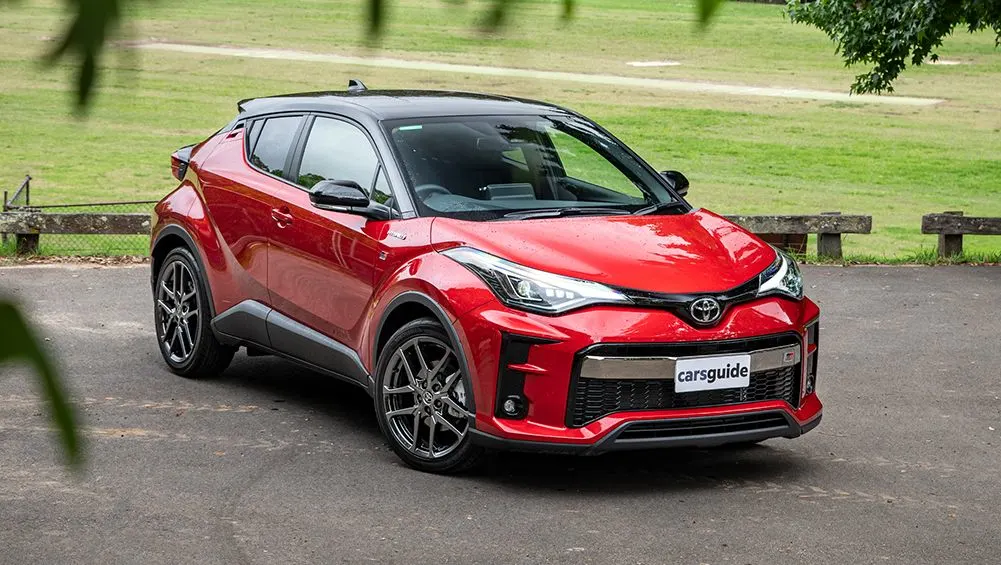
2. Toyota C-HR
The Toyota C-HR is a compact crossover that’s known for its bold, futuristic styling, but this same design also contributes to poor visibility, particularly in the rearward and over-the-shoulder areas. The C-HR features a dramatically sloping roofline and thick rear pillars that create substantial blind spots, making it challenging for drivers to see vehicles approaching from behind or in adjacent lanes.
The small rear side windows exacerbate this issue, leading to a compromised driving experience, particularly in urban environments where quick lane changes and precise parking are necessary.
In addition to the limited side windows, the rear window on the C-HR is quite small and positioned high up, creating a limited field of view when backing up or reversing. The unique rear-end design, which prioritizes aesthetics over functionality, also contributes to the car’s reduced rearward visibility.
Drivers often report that they feel reliant on the rearview camera and parking sensors to navigate tight spaces, as the natural visibility from the driver’s seat is limited. The high-mounted tailgate and the angular design of the rear end make it difficult for drivers to gauge how far they are from objects behind them, even with the help of modern sensors.
The interior of the C-HR doesn’t help alleviate visibility concerns either. The high beltline and small side windows create a feeling of confinement for both the driver and passengers. The lack of large, open windows makes it difficult for the driver to quickly spot pedestrians, cyclists, or smaller vehicles, which can be especially hazardous in busy cities or residential areas.
While Toyota has equipped the C-HR with safety features like a rearview camera and rear cross-traffic alert, the design still makes the vehicle feel less intuitive in terms of visibility compared to other models in the same segment.

3. Nissan 370Z
The Nissan 370Z is an iconic sports car known for its low profile and powerful performance, but when it comes to visibility, it’s far from ideal. The design of the 370Z—sleek and low-slung—limits outward visibility, especially to the rear and side.
The rear window in particular is extremely small, making it difficult for drivers to see what’s happening behind them. Coupled with the thick rear pillars, which obstruct the view over the shoulders, the 370Z’s visibility becomes a significant challenge when changing lanes or maneuvering in tight spaces.
Additionally, the low seating position of the 370Z further exacerbates visibility issues. Drivers must often lean forward or adjust their posture to get a better view of the road, which is not always possible, especially in heavy traffic or while reversing. The side windows are also small, and the rear-quarter windows are minimal, providing little assistance when navigating through tight spots.
Parking becomes an even more difficult task when considering the 370Z’s low front and rear overhangs, which make it tough to judge distances from the driver’s seat.
The 370Z is also lacking in modern safety features that could assist with its poor visibility. Unlike many newer sports cars that come with blind spot monitoring, rear cross-traffic alert, and parking sensors, the 370Z does not offer these features as standard.
As a result, drivers are forced to rely on their judgment, often leading to more cautious (and sometimes slower) driving. For enthusiasts who enjoy the car’s performance, the limited visibility may be a small price to pay, but for those looking for a more practical, daily-driver sports car, the lack of clear sightlines can be frustrating.
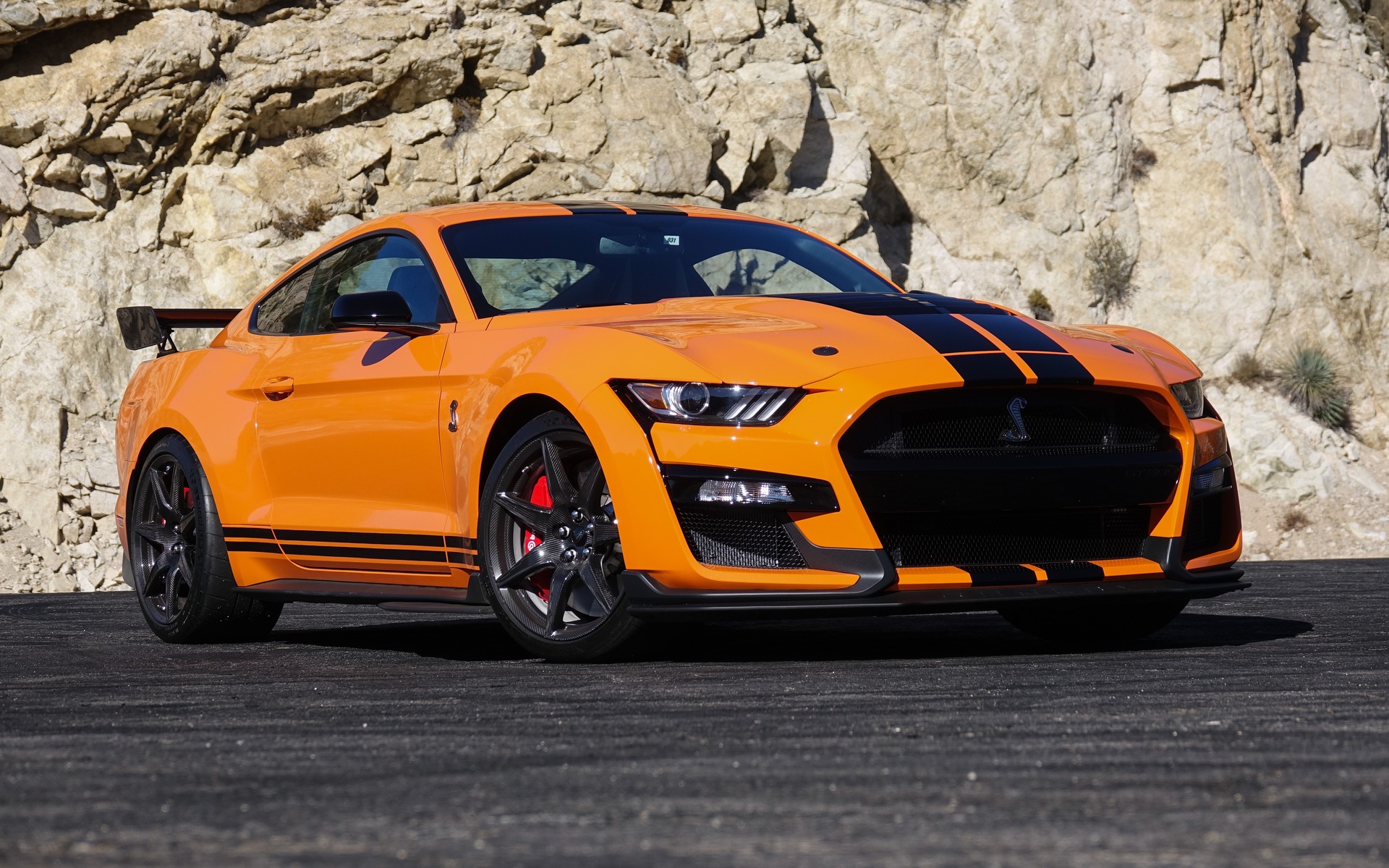
4. Ford Mustang (2015–2023 Models)
The Ford Mustang, with its bold styling and muscle car performance, has been a favorite among driving enthusiasts for decades. However, despite its reputation for power, the Mustang suffers from significant visibility issues, particularly in the newer models. The fastback roofline and thick C-pillars create substantial blind spots that make it difficult to see what’s happening around you, especially when changing lanes or navigating tight spaces. The rear window is also quite small and raked, limiting rearward visibility, which can make reversing or parking in crowded areas more challenging.
The side mirrors are relatively small, and their placement doesn’t do much to alleviate blind spots, making it even harder for drivers to see vehicles approaching from behind or in adjacent lanes. Although some Mustang models come equipped with rearview cameras and parking sensors, the design of the car still leaves a lot to be desired when it comes to visibility.
The thick front pillars, while contributing to the car’s sporty design, can also obstruct the view when making turns at intersections, forcing drivers to lean forward to ensure there are no oncoming vehicles or pedestrians in their path.
In addition to the structural limitations, the low-slung seating position of the Mustang can also create visibility issues for shorter drivers, as the dashboard and door panels can obscure the view of the road.
While the Mustang’s aggressive stance and aesthetic appeal may be visually striking, they come at the cost of clear sightlines, which can make everyday driving, especially in city traffic, a bit more stressful. Drivers accustomed to more visibility-friendly vehicles may find the Mustang’s design less practical for daily use, despite its performance capabilities.
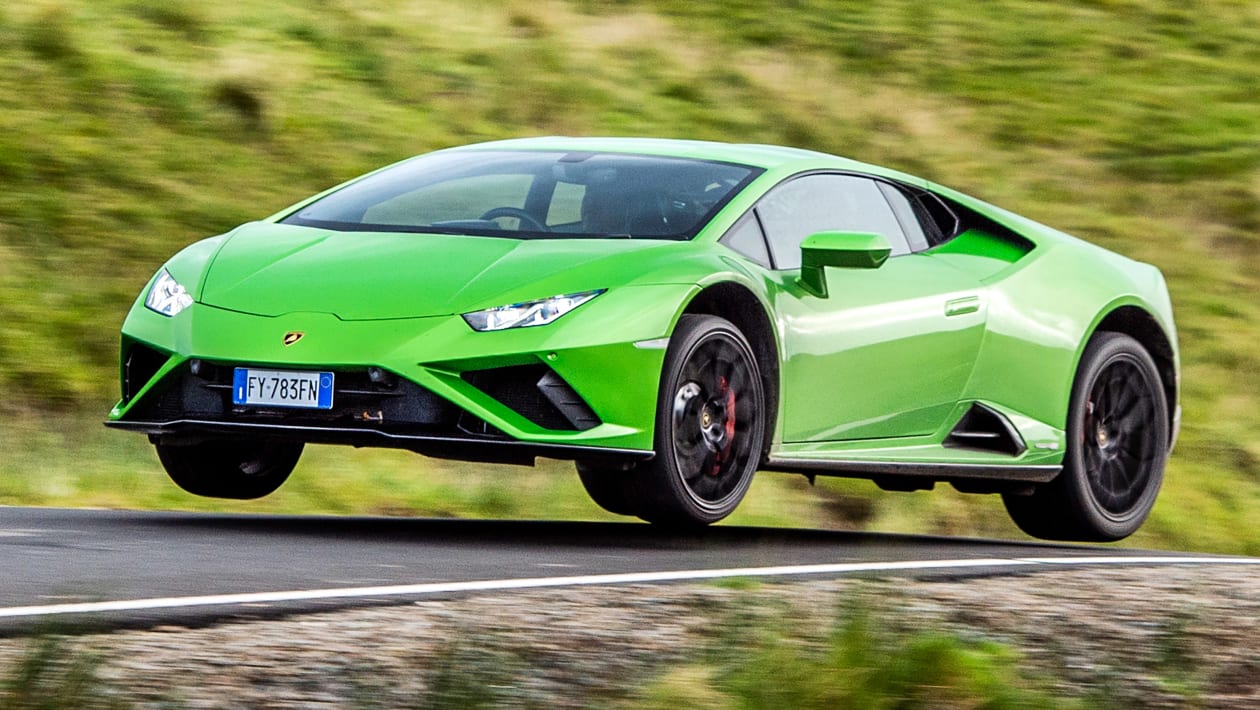
5. Lamborghini Huracán
The Lamborghini Huracán is the epitome of high-performance sports cars, offering blistering speed and stunning styling. However, as with many supercars, the Huracán prioritizes performance and aerodynamics over practicality, and one of the biggest sacrifices is visibility.
The car’s low, wide stance and aggressive rear-end design create a limited view of the road, especially when driving in dense traffic or parking lots. The rear window is tiny, and the engine cover takes up much of the view, creating a blind spot when reversing or navigating tight spaces.
The side windows are also small and narrow, and the thick rear pillars severely limit the ability to see what’s happening in the vehicle’s blind spots. The low roofline further contributes to the feeling of confinement, making it challenging for drivers to spot vehicles in adjacent lanes or check for pedestrians when making turns.
Even the side mirrors are positioned low and narrow, offering minimal help when it comes to keeping track of other vehicles. While many supercars come equipped with advanced driver assistance systems, the Huracán’s reliance on these features is critical due to the limited visibility from the driver’s seat.
Despite these visibility challenges, Lamborghini has included a rearview camera, parking sensors, and a front-and-rear collision system to assist drivers. However, these systems are not a substitute for natural visibility, and drivers must rely on them heavily, as it’s difficult to maintain a clear sense of the surrounding environment without these technologies.
The Huracán’s design and low seating position make it a thrilling car to drive at high speeds, but for everyday use in crowded urban environments, the limited visibility can be a source of frustration for many drivers.
ALSO READ: 10 Cars With Factory Cargo Nets That Actually Work
In the end, visibility plays a central role in ensuring safe and confident driving. Whether it’s the ability to see pedestrians at a crosswalk, spot vehicles in an adjacent lane, or maneuver through tight spaces, clear sightlines can make all the difference in avoiding accidents and improving driving comfort.
As we’ve seen, some vehicles excel in providing unobstructed views through large windows, narrow pillars, and thoughtful designs, while others, focused on aesthetics or performance, present significant challenges when it comes to visibility. The vehicles that prioritize clear sightlines often ensure that drivers can make better-informed decisions on the road, leading to safer driving experiences.
Take, for example, the Subaru Forester and Honda CR-V, which offer an elevated driving position and well-placed windows, allowing drivers to maintain a commanding view of the road. These vehicles are not only practical for urban driving but also provide a sense of confidence, knowing that the driver can quickly spot potential hazards.
The visibility in these vehicles is enhanced by their cabin designs, which eliminate the need for drivers to make awkward head movements or excessively rely on technology to see clearly around them. When a vehicle allows the driver to maintain natural awareness of their surroundings, it leads to more comfortable, less stressful driving, which is essential for long trips or navigating busy city streets.
On the other hand, there are cars like the Chevrolet Camaro, Nissan 370Z, and Toyota C-HR, where style and performance often take precedence over visibility. While these vehicles are thrilling to drive and boast striking designs, they come with significant drawbacks when it comes to sightlines.
The thick rear pillars, small windows, and low seating positions hinder a driver’s ability to see vehicles in adjacent lanes or spot obstacles when reversing. Drivers of these vehicles often find themselves relying on modern safety features like parking sensors, cameras, and blind spot monitoring systems, which can help but never fully replace natural visibility. In many ways, these cars underscore the delicate balance that automakers must strike between design, performance, and practicality.
For potential car buyers, visibility should be an important consideration when choosing a vehicle, particularly for those who drive frequently in congested city environments or on highways. Poor visibility can create unnecessary stress, making tasks like parking or lane changes more challenging and potentially dangerous.
It is especially important for drivers who may not be as comfortable with advanced driving assistance technologies or those who rely heavily on their own awareness of their surroundings.
Ultimately, the vehicle that best suits your needs should offer not only the performance and design that you desire but also the visibility necessary for safe and comfortable driving. Whether you’re looking for a family-friendly SUV, a stylish sports car, or a utility vehicle for outdoor adventures, it’s crucial to take visibility into account as part of the decision-making process.
A car that allows you to see the road clearly, with minimal obstructions, will not only make your driving experience more enjoyable but will also reduce the risk of accidents, ensuring that you and your passengers are as safe as possible on the road.
